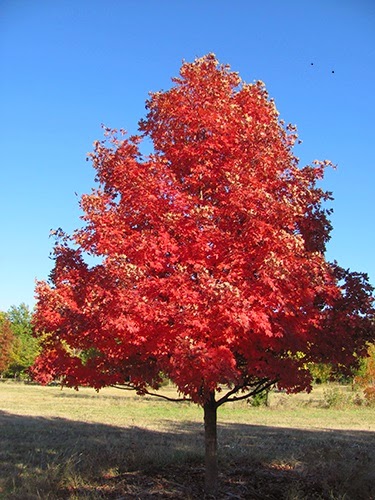Chinch bugs attacking corn and sorghum stands!
Wheat harvest around the district is
progressing with some producers done!
The rains have really helped the continued development of the corn and
sorghum which is significant for combating against insect infestations.
All life stages of chinch bugs seem to be
extremely active at the present time in both corn and grain sorghum.
Nymphs and adults started migrating out of wheat fields at least two weeks ago,
moving into any adjacent corn or grain sorghum fields. Those smaller-reddish
nymphs have grown considerably since then, and are now either late instar
nymphs or adults.
 Many of these recently matured adults are
now mating and have even started egg deposition. These eggs are, and will
continue to be, hatching which means more bugs and thus more feeding on these
plants. Fortunately, most corn is large enough to withstand considerable
feeding by chinch bugs, but the milo may have some concerns as it is smaller. Recent
rains have certainly helped greatly enhance the growing conditions, which
increases the plant’s tolerance for chinch bug feeding.
Many of these recently matured adults are
now mating and have even started egg deposition. These eggs are, and will
continue to be, hatching which means more bugs and thus more feeding on these
plants. Fortunately, most corn is large enough to withstand considerable
feeding by chinch bugs, but the milo may have some concerns as it is smaller. Recent
rains have certainly helped greatly enhance the growing conditions, which
increases the plant’s tolerance for chinch bug feeding.
Eggs may be laid anytime from the end of
April to early October, although in each generation the majority are laid over
a two to three week period. Each female lays up to several hundred eggs. Female
reproductive potential varies greatly from year to year and may be affected by
the host plant quality during development. The time required for egg hatch
ranges from one to two weeks and depends on temperature and location. Eggs in
warm locations with good solar exposure hatch first.
Chinch bugs puncture vascular tissues to
extract plant juices and secrete digestive enzymes that cause the break-down of
surrounding plant tissues. Feeding punctures also can allow pathogens to enter
the plant. Consequently, damaged plants present a variety of symptoms including
stunting, yellowing, wilting, and necrotic lesions.
Older nymphs are larger and cause more
damage than younger ones. The effect of nymphal feeding depends to a large
degree on the health and nutritional status of the plants. Growth stage and
water balance are critical because small or drought-stressed plants have less
ability to tolerate or recover from chinch bug feeding damage. The chinch bug
feeds on a wide variety of grasses, including many cereal and forage crops.
The risk of first generation damage is
greater where sorghum is planted next to thin stands of wheat. Seedling sorghum
is most vulnerable, and seven to 10 bugs per plant will cause stunting, poor
root development and stand reduction. Larger plants can tolerate more bugs, but
severe infestations can cause stunting, lodging, and yield loss.
Timely applications of foliar insecticides
can be used to rescue corn or sorghum fields invaded by migrating chinch bugs
on the edge of the fields to help prevent movement into the field. Most
currently approved materials have good efficacy against chinch bugs, if three
factors are considered. First, it is important to use the full recommended rate
of the selected insecticide, preferably delivered in 20 to 40 gallons of water
per acre. High gallonage ensures good plant coverage and enhances the movement
of material into protected plant parts such as leaf sheaths, which increases
the probability of contact with bugs. Second, the material should be delivered
with properly adjusted and calibrated equipment. Fortunately, insecticides
targeting the sugarcane aphid will likely provide some control of late season
chinch bugs as well.
Third, the timing of the insecticide
application is critical. Early morning applications are preferred because winds
tend to be calmer (reducing drift), temperatures are cool (reducing
volatilization of chemicals), and a large proportion of the chinch bug
population will be on the plants and exposed to the application. Treat promptly
as migrations begin and before significant numbers of bugs enter the field.
Most grain sorghum is much less developed
than corn and won’t be able to tolerate as many chinch bugs as the larger corn
plants. Treating plants much after the V6/V7 (corn 6 and 7 leaves) growth
stages is not as effective as treating smaller plants. Like corn, good
growing conditions significantly help sorghum plants withstand chinch bug
feeding. So we are fortunate that we have received moisture to help the
growth of milo fields. However, if dry
conditions return, chinch bug feeding can significantly weaken stalks and cause
lodging later in the season.
 No natural enemies of chinch bugs can
reliably reduce or control large populations when conditions are favorable for
their development. Predation by quail and other birds can be conspicuous, but
likely has little effect on bug population growth.
No natural enemies of chinch bugs can
reliably reduce or control large populations when conditions are favorable for
their development. Predation by quail and other birds can be conspicuous, but
likely has little effect on bug population growth.
For more information on chinch bugs,
management decisions, and insecticide recommendations, K-State Research and
Extension has an excellent publication: “Chinch Bugs” that is available ONLINE at
https://bit.ly/2z98xeS or at any of our
Post Rock Extension District Offices at Beloit, Lincoln, Mankato, Osborne or
Smith Center.
If you have more questions on insect
management in your crops, give me a call at any of our Post Rock Extension
District Offices.
Post
Rock Extension District of K-State Research and Extension serves Jewell,
Lincoln, Mitchell, Osborne, and Smith counties. Sandra may be contacted at
swick@ksu.edu or by calling Smith Center, 282-6823, Beloit 738-3597, Lincoln
524-4432, Mankato 378-3174, or Osborne 346-2521. Join us on Facebook at “Post Rock
Extension”. Also remember our website is
www.postrock.ksu.edu and my twitter account is @PRDcrops.










